ARTS AND HUMANITIES
Museum is a place of solace, inspiration, community
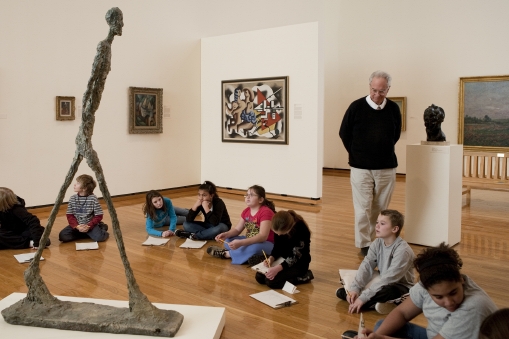
Frank Robinson stops by a Johnson Museum gallery as a group of schoolchildren view Alberto Giacometti's sculpture "L'Homme qui Marche II (Walking Man II)," one of Robinson's favorites. The museum offers educational programs to thousands of children each year.
As he was headed off campus the day before Thanksgiving, Frank Robinson stopped by the deserted Green Dragon Café in Sibley Hall to drop off bookmarks printed with the Herbert F. Johnson Museum of Art's exhibition schedule.
"I want to make sure the students know what's going on at the museum," he explains.
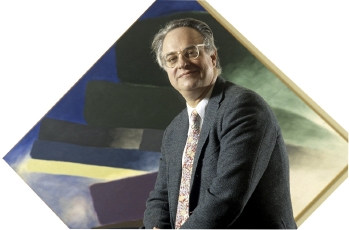
Frank Robinson in 1992, his first year as the Johnson Museum's director. See larger image
Not many museum directors are as attentive to such small details, but Robinson considers them as important as any of the day-to-day operations he oversees.
The Johnson Museum's Richard J. Schwartz Director since 1992, Robinson, 71, is retiring at the end of this academic year. The museum has been his full-time vocation and passion from the start, when he gave his staff badges that said "TLV" – a reminder to always "think like a visitor."
He takes effusive pride in everything about the museum – from the collection to his staff, their numerous educational and outreach efforts, and the I.M. Pei-designed building itself.
"If it were closer to New York, it'd be famous," he says. "It's one of Pei's best buildings. It's just plain beautiful."
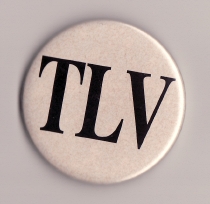
When Frank Robinson first became the Johnson Museum's director in 1992, he gave badges to his staff that read "TLV" -- a reminder to always "think like a visitor." See larger image
A part-time poet who has published two books of verse, Robinson often waxes lyrical on the qualities of a particular piece of art and on the museum as a place of solace and community.
"There's very little glue that brings us together as a society," he says. "A museum is one of those places. … It's a civilizing experience, a safe haven."
Ira Drukier '66, who chairs the museum advisory council, says that "Frank's enthusiasm reinvigorated the museum … [it] came into its own. It's become a major force on campus. That's thanks in large measure to Frank, his enthusiasm and his vision for this museum."
Robinson first fell in love with museums and art when he was 13, on a trip to Rome with his father. The Rhode Island native studied art history at Harvard and has dedicated himself to museum service for most of his life. He's had unusually long terms compared with others in his field; he headed the Rhode Island School of Design's Museum of Art for 13 years before his 19 years at Cornell.
Some of Frank Robinson's favorite items from the Johnson Museum's collection |
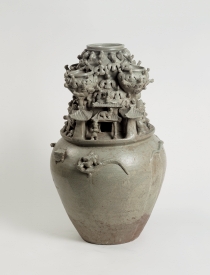
"Funerary Jar" (Chinese, Zhejiang province, 265-316 A.D., glazed stoneware, Yue ware). See larger image

One of Frank Robinson's favorite items from the Johnson Museum's collection: "Portrait of Daniel Lock F. S. A." (William Hogarth, British, 1762, oil on canvas). See larger image
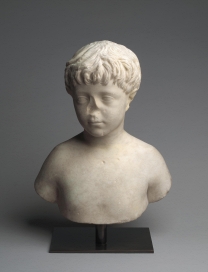
"Bust of a Boy" (Roman, Antonine period, 140 A.D., marble). See larger image
The Johnson is "a learning museum," he says – part of its mission. Student opportunities include internships, an advisory council, courses (The Museum and the Object and Museums and the Public), clubs and volunteering. "If you know how to speak Chinese, or the languages of Mayanmar, Indonesia or Thailand, we need you," Robinson says.
The museum also provides teaching opportunities for faculty; is a resource for artists, art historians and scholars; and welcomes thousands of area schoolchildren each year through the museum's education programs and Kids Discover the Trail! – a local Discovery Trail program with the Ithaca Public Education Initiative.
"You can come into this place and look at the views, but to get the most out of the museum, you need to say, 'I want to learn,'" he says. "I still believe that you can't leave a museum as narrow a person as when you enter."
Robinson puts in 10-hour days "when I'm here" and spends about 100 days a year on the road – "and those are usually 14-hour days," he says. He travels primarily for fundraising, although he tries to visit museums in whatever city he's in.
Attendance has grown considerably under his stewardship, and the Johnson now attracts more than 80,000 visitors a year and schedules more than 1,000 programs including tours, lectures and off-campus outreach. The permanent collection is 33,000 objects and growing, with more than 1,200 pieces added in the last two years alone, and there is an ongoing digitization project to catalog the entire collection, Robinson says.
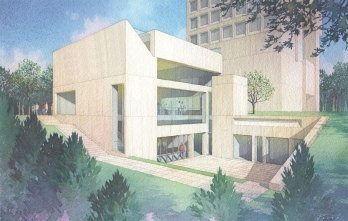
Artist's rendering of the Johnson Museum's new addition, set to open later this year. See larger image
To him, they are much more than objects. They're a constant source of inspiration.
Among his favorite works displayed at the Johnson, Pablo Picasso's "Head of Fernande" from 1909 and Alberto Giacometti's "L'Homme qui Marche II (Walking Man II)," from 1959, are "arguably the two greatest pieces of sculpture of the 20th century," Robinson says. "One is so concerned with experimentation, the other with expressing the experience of the Holocaust."
Robinson is as proud of the museum's future direction as he is of his own history there. He shows off plans on the wall for a new three-story wing now under construction. The wing, opening later this year, will add nearly 16,000 square feet of programming, exhibition and storage space.
With the new wing and recent renovations and upgrades to the original 1973 building, including a video gallery and open storage display cases in a former lecture room, the museum will be better able to present its extensive Asian art collection, African and pre-Colombian art and other holdings, he says.
"We'll be able to show close to 1,000 works we've never been able to show before," Robinson says.
Even in retirement, Robinson plans to stay involved with Cornell, working part time with the Division of Alumni Affairs and Development. He also will continue to guide art lovers on future trips abroad for Cornell's Adult University.
